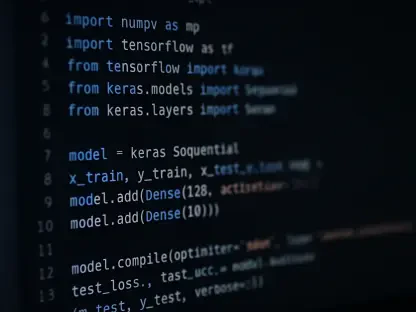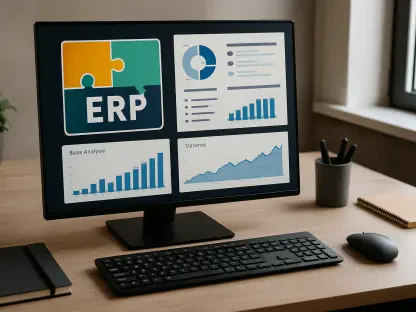The concept of zero trust has gained significant traction in recent years as the digital landscape grows increasingly complex and fraught with security threats. Site Reliability Engineers (SREs) play a crucial role in adapting to these new paradigms, merging traditional reliability engineering principles with cutting-edge cybersecurity strategies. As organizations rush to safeguard their systems, zero-trust principles are becoming a central component of their security strategies. Originating primarily in network security, zero trust now spans a variety of IT sectors. The philosophy centers on the idea of “never trust, always verify,” aiming to scrutinize users, devices, and network components continuously. This article examines the integration of zero-trust principles within SRE to enhance both security and reliability, illustrating how SRE teams can embed zero-trust practices in their operational methodologies.
1. Beyond the Buzzword: Understanding Zero Trust
Zero trust is often mistakenly confined to network security, but its ethos reaches far beyond that. The framework is designed to establish thorough verification processes, considering everyone a potential threat until proven otherwise. Trust is never assumed. This fundamental security change is about consistently authenticating and verifying before granting access, beyond just securing internet gateways. In traditional SRE roles, emphasis has been more on system availability and performance than security. However, as cyber threats continue to evolve, this focus is expanding. SREs are particularly suited to this shift due to their expertise in managing systems, automation, and their understanding of infrastructure and code. Integrating zero trust means involving SRE teams in security beyond the usual scope—into cloud computing, containerization, and microservices.
SREs have the capacity to go beyond traditional security measures, incorporating zero-trust principles into their routine practices. This means reengineering how access control, data protection, and identity verification are conducted within organizations. A thoughtfully implemented zero-trust framework reduces risks, lowers the probability of unauthorized data access, and enhances system resilience against breaches. The success of this framework relies heavily on continuous monitoring, automated policy enforcement, and incident response. SREs can leverage their capabilities in telemetry and observability to integrate security signaling that aligns with zero-trust doctrines, ensuring the infrastructure remains both reliable and secure. As security becomes a shared responsibility, the synergy between SRE and security teams ensures vulnerabilities are continuously identified and mitigated.
2. Aligning Security with Reliability: The Convergence Challenge
Modern reliability engineering transcends traditional boundaries to assimilate security with system robustness. As the operational environments evolve, maintaining a secure infrastructure amidst rapid deployment cycles becomes imperative. The domain of SRE increasingly involves tighter collaboration with security teams to embed security layers directly into development and deployment cycles. This convergence necessitates a shift in operational paradigms as organizations strive to achieve ‘security as dependability.’ By establishing strict controls over system modifications and enforcing identity verification protocols, SRE teams can substantially mitigate risks and prevent security breaches.
One of the critical issues involves minimizing the impact of compromised credentials or tokens that can otherwise escalate security incidents. If strict access and authentication controls are not established beforehand, malicious actors could exploit vulnerabilities to move laterally across systems. SRE teams must thus ensure that authentication occurs not only at entry but as an ongoing process. Employing principles such as mutual authentication, transport-layer security (TLS) for secure connections, and explicit service identity checks can effectively align the dual goals of reliability and security. The integration of zero-trust principles at every touchpoint reflects the necessity of harmonizing security practices with operational frameworks, forming a robust structure for both current and emerging technologies.
3. Policy as Code: Democratizing Security Implementations
The concept of policy as code is transformative, allowing SREs to manage security policies with the same agility as infrastructure configurations. This approach enables the dynamic enforcement of security measures in real time, particularly within continuous integration and continuous deployment (CI/CD) pipelines. By embedding security policies into the deployment process, organizations ensure that security becomes an inseparable component of the software lifecycle, safeguarding against vulnerabilities early in the development process. Policy as code creates a uniform framework for maintaining and updating security practices, thus extending the zero-trust model across an organization’s technological landscape seamlessly.
SRE teams benefit from policy as code by having reproducible configurations that provide consistency in security posture, regardless of the deployment environment. These policies can be encoded, versioned, and audited like traditional code, ensuring a transparent and adjustable security apparatus. By incorporating policy checks within CI/CD pathways, SREs can react swiftly to potential security threats, adjusting policies instantaneously without disrupting operational momentum. Through policy as code, security policies become more accessible and manageable, dismantling silos between different IT departments and fostering a culture where security is recognized as an integral factor in site reliability.
4. The Role of Telemetry, Observability, and Contextual Security
Telemetry serves as the neural network for SRE operations, gathering logs, metrics, and traces to propel observability. In a zero-trust architecture, analyzing this telemetry within a security context is crucial for identifying anomalies and enhancing response strategies. This process demands integrating security events within the same observability tools used for performance monitoring, ensuring a streamlined approach to identifying and resolving incidents. As SRE focuses on bridging the gap between reliability and security, contextual telemetry becomes invaluable in distinguishing between common system alerts and critical security breaches.
Furthermore, integrating security signals into existing observability platforms facilitates rapid threat detection and remediation, thus shortening the incident lifecycle significantly. By ensuring all abnormal patterns and unsuccessful access attempts are monitored within a single, coherent platform, SRE and security teams collaborate more effectively. This unified observability solution supports real-time decision-making and proactive threat management, aligning with zero-trust goals. A reliable telemetry framework provides SRE teams with the data necessary to anticipate and preemptively resolve security threats, boosting the overarching security posture and enhancing system uptime.
5. Moving Toward Zero-Trust Culture: Practical Implementation Steps
Transitioning to a zero-trust model does not necessitate overhauling existing systems overnight. Instead, organizations can gradually incorporate zero-trust principles within their operations, starting with foundational measures. One practical step involves universal identity enforcement using ephemeral keys and workload identity mechanisms. By ensuring that identity verification occurs at every access point, SREs can secure communication channels and prevent unauthorized access. Comprehensive logging of all system modifications and access attempts further bolsters security, enabling transparent auditing and incident tracing.
Automation plays a pivotal role in achieving zero-trust tenets, reducing human access to systems and limiting the use of long-lived credentials. Ephemeral credentials and automated access management systems allow organizations to minimize vulnerabilities and safeguard sensitive operations. Additionally, chaos engineering principles can be applied to simulate potential security threats, providing SRE teams with critical insights into their security resilience and incident response strategies. SREs should regard security events as integral to system reliability, incorporating these considerations into postmortems and retrospectives. By embedding zero trust as a cultural staple, teams foster an environment where security becomes a shared responsibility, aligning with both preemptive measures and reactive strategies to ensure consistent site reliability.
Advancing Toward Holistic Security Integration
Zero trust is often narrowly associated with network security, but its principles extend much further. It establishes rigorous verification processes, treating every entity as a potential threat until verified otherwise—trust is never assumed. This shift in security mindset involves ongoing authentication and verification to grant access, moving beyond just securing internet gateways.
Traditionally, Site Reliability Engineers (SREs) focused more on ensuring system availability and performance rather than on security. However, with the increasing complexity and evolution of cyber threats, this focus is changing. SREs, equipped with their expertise in managing systems, automation, and infrastructure, are well-suited to adopt this shift. The integration of zero trust calls for SRE teams to engage deeply with security in areas like cloud computing, containerization, and microservices.
SREs can surpass conventional security methods by embedding zero-trust principles into daily procedures. This involves rethinking access control, data protection, and identity checks. A well-executed zero-trust framework reduces risks and enhances system robustness. Success depends on continuous monitoring and automated policy enforcement. SREs can utilize telemetry and observability to incorporate security signals that complement zero-trust principles. This ensures that the framework remains reliable and secure. As security becomes a collective responsibility, collaboration between SRE and security teams ensures vulnerabilities are actively identified and mitigated.









